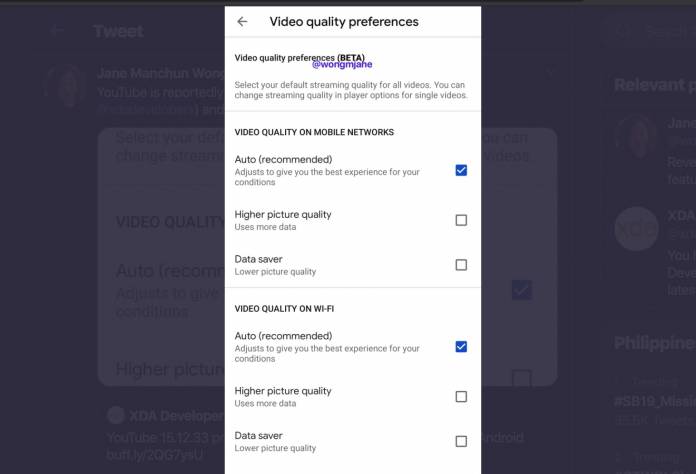
When YouTube limited the default video quality to 480p for all users, people were not complaining and understood the need to do so. With a lot of people staying at home to help prevent the spread of COVID-19, they are resorting to watching videos to keep them entertained, informed, and in touch. Now it looks like Google is preparing an update to the YouTube for Android app that would allow users to choose their default video quality, which may also be defeating the purpose of the limit.
YouTube is one of the most widely-used apps in the age of the quarantine and shelter-in-place policies. And so as a measure to save up on the global bandwidth, Google decided to limit the automatic quality of videos to 360p – 480p (depending on your Internet connection). Users could still choose to stream at a higher quality but they would have to do it in every video that they watch, which should dissuade those who would rather just watch continuously.
But in version 15.12.33 of the YouTube for Android app, XDA Developers said that there is a string pertaining to video quality preferences in the settings page. This probably means that users will be able to change the default video quality. Nothing can stop you from choosing 720p or 1080p as your preference for all the videos you’ll be watching. Google is probably hoping that we will still be less selfish about hogging bandwidth, but you never know with people these days.
Reverse engineer expert Jane Manchun Wong also shared a screenshot on Twitter of this default video quality preferences. It seems that you’ll be able to choose a default quality for when you’re on your mobile network or when you’re on WiFi. Options included are Auto, Higher Picture Quality, and Data Saver. You will still be able to manually change the quality for every video that you watch but if you just want everything to be higher than the default 480p.
YouTube is reportedly working on “Video quality preferences” (via @xdadevelopers) and this is what it looks like https://t.co/DsJ7O0SoWh pic.twitter.com/xpt2x5zPKa
— Jane Manchun Wong (@wongmjane) March 25, 2020
We don’t know yet when this feature will roll out or if it will actually go live. Meanwhile, let’s hope everyone cooperates and be satisfied with watching videos on 480p or lower.









